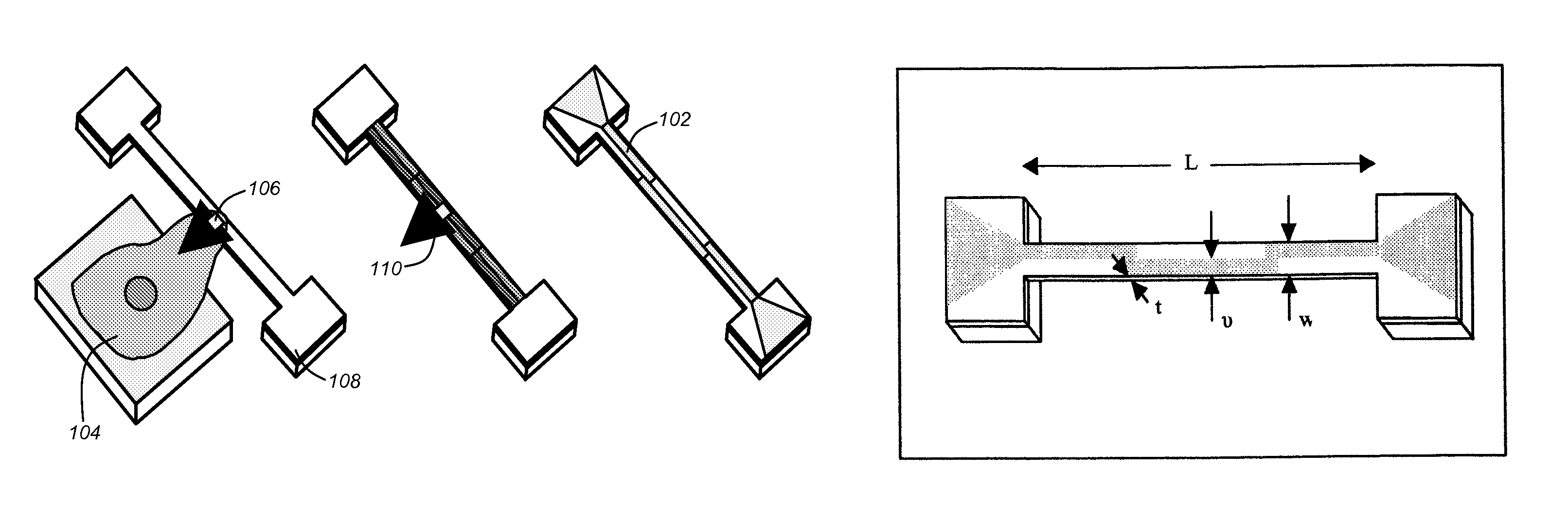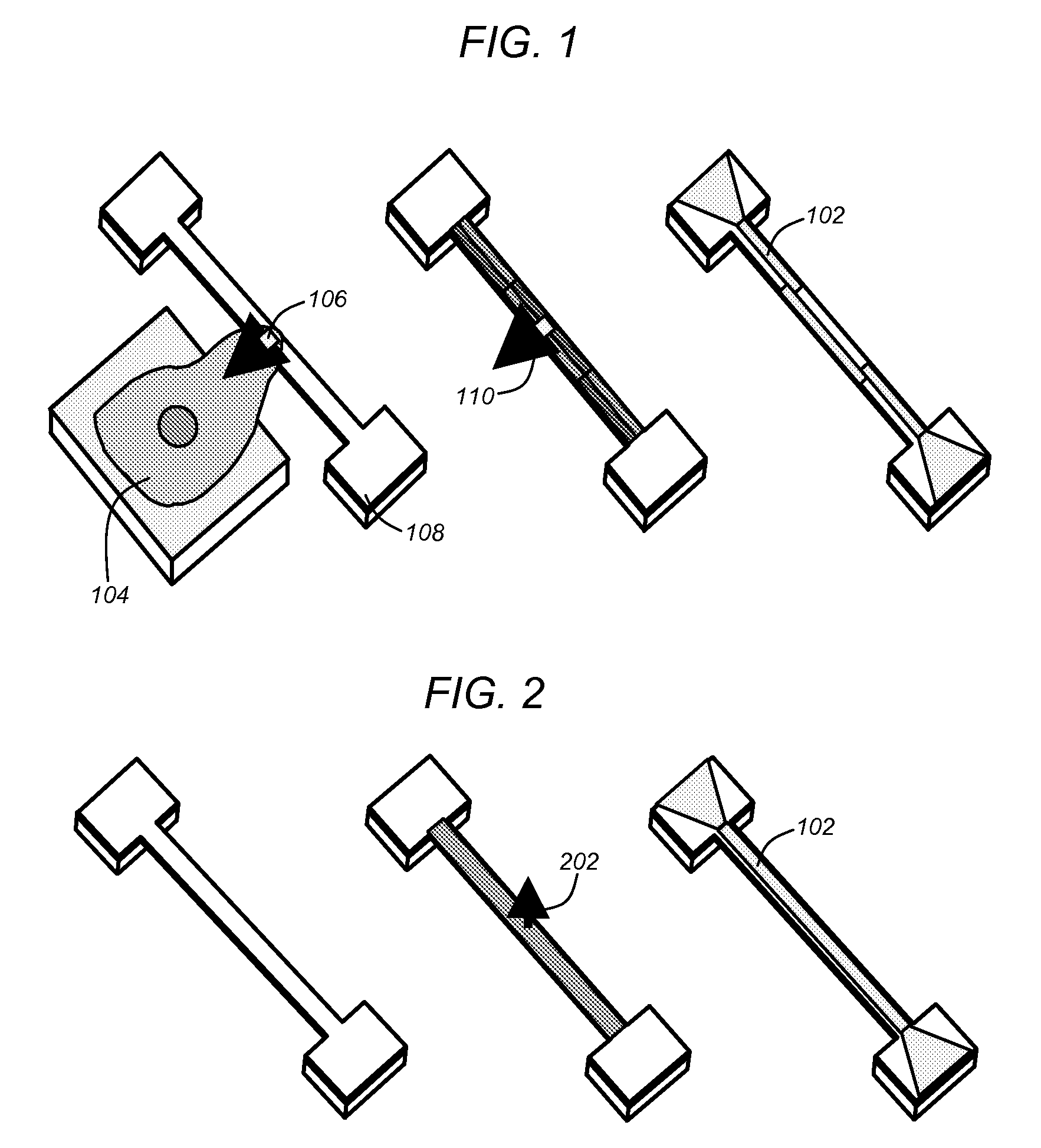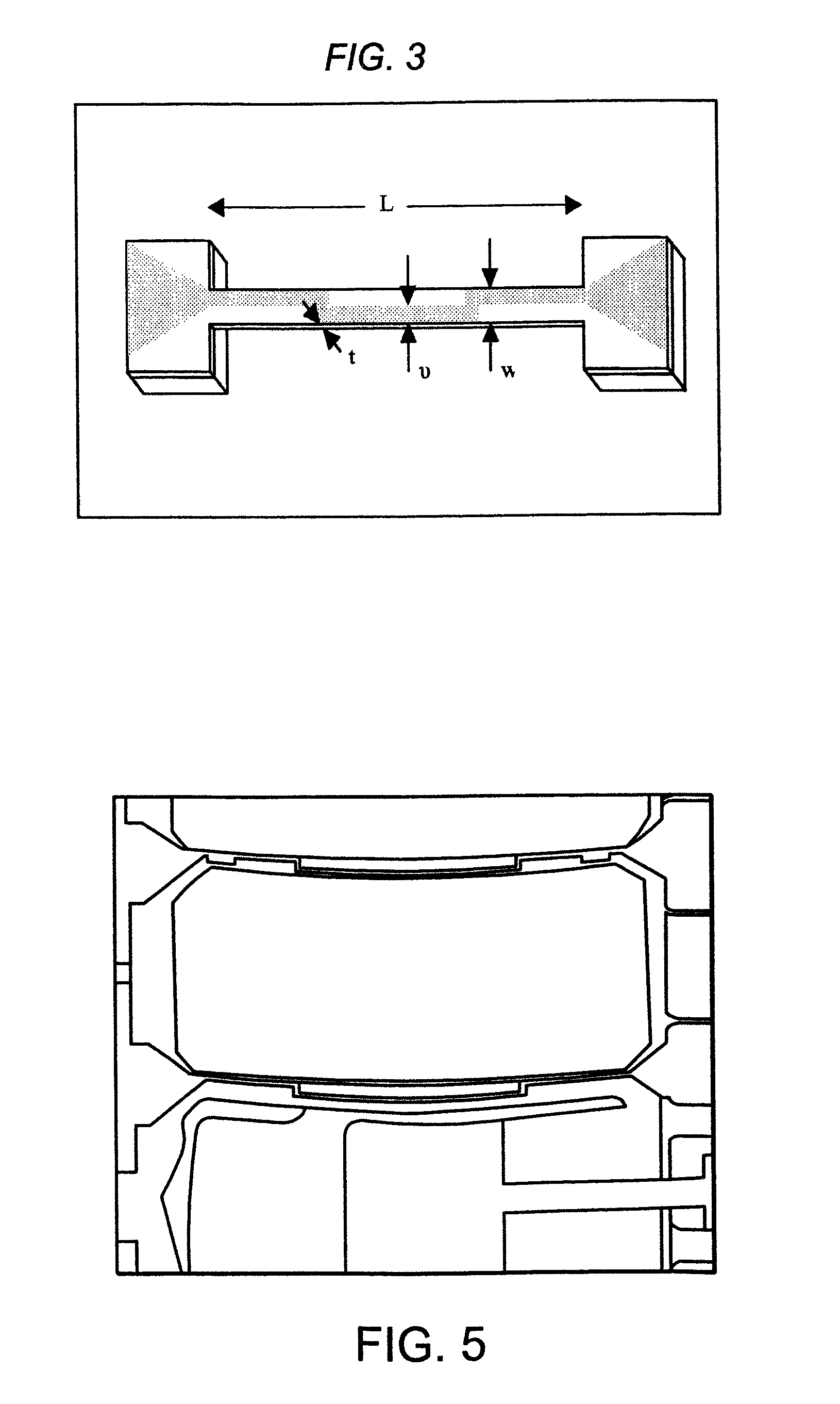Polymer NEMS for cell physiology and microfabricated cell positioning system for micro-biocalorimeter
a micro-biocalorimeter and cell technology, applied in the field of nanoscale electromechanical devices, can solve the problems of limiting the frequency achievable and the level of sensitivity attainable, and the standard approach used to make microelectromechanical systems (mems) cannot provide access to the nanoscale, so as to reduce the time and sample quantity, reduce the scale, and accelerate the parallel implementation of calorimetric measurement
- Summary
- Abstract
- Description
- Claims
- Application Information
AI Technical Summary
Benefits of technology
Problems solved by technology
Method used
Image
Examples
Embodiment Construction
a dry force sensor prior to micro-fluidic encapsulation and a fluorescent image of a cell attached to the force sensor on a micro-fluidics encapsulated device in accordance with one or more embodiments of the invention;
[0038]FIG. 17 shows force vs. time data from a single cell showing a stable force in growth media, collapse of that force when the cytoskeleton disrupting agent Cytochalasin D is introduced, and the recovery of the force when the Cytochalasin D is removed in accordance with one or more embodiments of the invention;
[0039]FIG. 18 illustrates a cross section of such a multilayer parylene calorimeter compartment in accordance with one or more embodiments of the invention;
[0040]FIG. 19 shows the reaction chamber on a suspended parylene membrane, the microfluidics channels for fluid delivery, and the thermopile for sensing heat release in accordance with one or more embodiments of the invention;
[0041]FIG. 20 illustrates a schematic of a calorimeter in accordance with one or...
PUM
| Property | Measurement | Unit |
|---|---|---|
| time-constant | aaaaa | aaaaa |
| frequency | aaaaa | aaaaa |
| widths | aaaaa | aaaaa |
Abstract
Description
Claims
Application Information
 Login to View More
Login to View More - R&D
- Intellectual Property
- Life Sciences
- Materials
- Tech Scout
- Unparalleled Data Quality
- Higher Quality Content
- 60% Fewer Hallucinations
Browse by: Latest US Patents, China's latest patents, Technical Efficacy Thesaurus, Application Domain, Technology Topic, Popular Technical Reports.
© 2025 PatSnap. All rights reserved.Legal|Privacy policy|Modern Slavery Act Transparency Statement|Sitemap|About US| Contact US: help@patsnap.com



